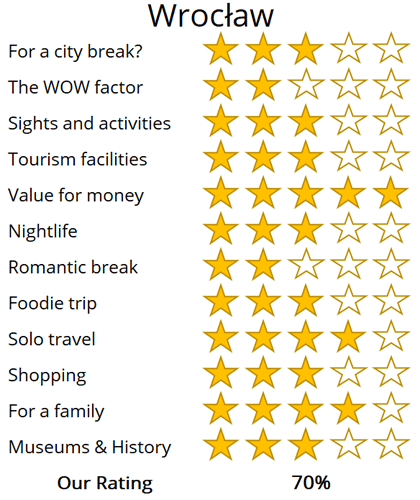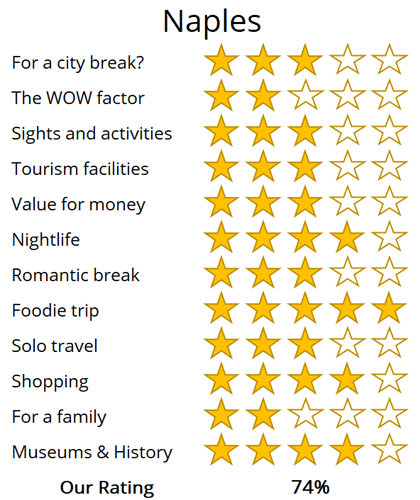WhereToGoForMyHoliday.com
The best destination comparison site!
WhereToGoForMyHoliday.com
The best destination comparison site!
Wroclaw or Naples, which is better for your holiday in 2024?
Wroclaw and Naples both offer unique and enticing experiences, but which one should you choose for your city break or holiday?
We understand your dilemma. There is an abundance of travel guides for both cities, but few actually comparing them, and advising you which is the better for your trip.
This article will provide our unbiased and independent views of Naples and Wroclaw, hopefully making your choice that little easier.
The article is structured into several sections, each of which can be directly accessed through the following links:
• Introduction to the cities
• Scores and ratings
• Which one should I, friends, or family visit?
• When to visit and weather
• Who is the city suited for?
• The perfect 48hours (with map)
• Tourism details (where to stay? airport details?)
Introduction to Wroclaw and Naples
Wroclaw is the historical capital of the Silesia region. It's been ruled and fought over and shaped by countless tribes and peoples, from the warring Slavs of the first millennium to the Habsburg emperors to the Prussian generals of the 1800s.
This makes it a strangely diverse and varied city, with Germanic townhouses and Flemish-styled mansions next to Gothic cathedrals and USSR tenements.
Wroclaw is a good-looking city. It's got a beautiful perch on the Oder River, spreading from island to island with arched bridges that recall Venice and wooded parks aplenty.
The Old Town is the anchor of it all, and a great place to wander, people watch, and drink Polish beers. Beyond come the fairy-tale spires of Cathedral Island, the colossal concrete dome of Centennial Hall (a UNESCO site), and even Zen parks inspired by Japan.
In many ways, Naples is split in two halves; a town of shadow and light.
There's the Naples of pizza dough and La Dolce Vita, which is all about kicking it by the azure Tyrrhenian Sea with good food and great wine.
Then there's the gritty city, whose reputation comes from the Camorra mafiosos and the ramshackle alleys around Spaccanapoli street. Both are immersive and interesting in their own right
Put simply, Naples is one of the most authentic and enthralling cities in Italy. The self-proclaimed capital of the south, it's got Roman history and gorgeous landscapes in equal measure.
It promises something for honeymooners, backpackers, foodies, and outdoorsy types, but won't sugar-coat the experience with anything special for tourists.

The historic centre of Wrocław and the Odra River

The harbour front in Naples
Wroclaw vs Naples: City Ratings
Summary
Where would I journey for a personal escape?
Naples
Where would I send my parents for a memorable visit?
Wroclaw
Where's the ideal destination for my adventurous 19-year-old cousin?
Wroclaw
Where should my food-obsessed friend indulge their culinary passions?
Naples
Note: The above comparisons are weather-independent and are based on travel during the most opportune times of the year. Details about the ideal travel seasons are elaborated upon later in this article.
In the sections that follow, you'll find a comprehensive comparison between these two fascinating cities. This includes recommendations on the duration of stay, the best times to visit, and tailored 48-hour itineraries for each city.
The final segment delves into practicalities for your travels, such as the best airport to fly into, the optimal districts for your accommodation, and insider tips, for when you come to explore the city.
We hope that you find all of this information useful, in planning your next exciting trip!
Destination details
How long to spend each city?
That's a tricky one. Naples itself can be seen from tip to toe in just a couple of days. We'd say around 48 hours is perfect for tasting Neapolitan pizzas in legendary L'Antica Pizzeria da Michele and feeling the vibes down lively Spaccanapoli – the main drag in the historic centre.
For a longer stay of five to seven days, there's a catch: A lot of Naples's main draws are outside of town. Think the likes of Pompeii, the soaring crater of Vesuvius, and the Amalfi Coast. To add those on, you'll need to plan to come here for considerably more time.
Wroclaw may not be vast in size, but it stands as one of Poland's prominent cities. Its Old Town, brimming with charm, is perfectly navigable on foot, while an efficient tram network offers a swift tour of the key attractions for a modest sum. Generally, a day or two suffices to experience the city’s highlights, making Wroclaw an ideal destination for a brief, fly-in, fly-out weekend retreat.
For those contemplating a more extended stay in Wroclaw, consider interspersing your visit with day trips to the surrounding areas. Nearby, you can explore the forested slopes of Karpacz, visit the awe-inspiring castles along the Eagles Nest Trail, or make a pilgrimage to the sacred site of Jasna Góra.
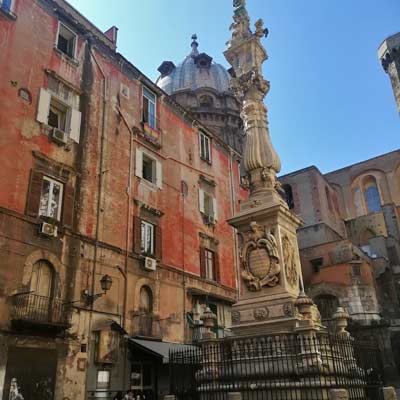
The obelisk of San Gennaro in the Piazza Riario Sforza

There are over 350 charming dwarf statues are scattered throughout Wroclaw’s historic centre. These characterful figures even have their own tourist map, along with s tory behind each one….
Unless you're a fan of air pollution and sub-zero temperatures, Wroclaw is not the place to be in the winter. The whole of south Poland gets cold between November and March – really cold. We're talking minus 10 degrees regularly, with sudden snowfalls and freeing rain. Of course, when there is a dusting of the white stuff, the Old Town of Wroclaw can look wonderful, but recent winters haven't been so promising.
For sightseeing and enjoying the student buzz of the town, it's probably better to hold off until May. That's when the weather really starts getting good. You might have chilly evenings, but you should be able to don the shorts and t-shirts for your wanders through the city. What's more, the local university is in session, so the bars will be lively and vibrant.
Summer sees the students go home and the tourists arrive. It's a reliable period for weather, even if you have to deal with the occasional thunderstorm around early afternoon. September is just as nice, if not even better. That's when the trees of the island parks in Wroclaw start to change to yellow and ochre, lending a romantic atmosphere to the Silesian capital.
Spring is the best time of year in Naples. This southern city gets warm nice and early, so you can expect April highs in the 20s and even enough sun to hit the beaches of Gaiola and the local lidos if you want to take a dip in the Med. There are fewer other travellers about before the summer rush too, which means you'll find it more pleasant strolling the historic centre and Pompeii.
Of course, that's not to say the summer is bad in these parts. It most certainly isn't. Reliable warmth and loads of sunshine, topped off with a buzz about town, help make the months between June and August great options. Just be prepared to pay extra for hotels and flights, and don't expect the city to be quiet.
Naples is a raw and immersive Italian city. It's got pizza places that are frequented by locals. It's got wine bars serving gorgeous Campanian tipples. It's lived-in and gritty and real. That makes it perfect for city hoppers who like atmosphere and energy. And the joys don't end there…
Just around the Bay of Naples are two of the country's most impressive archaeological sites: Pompeii and Herculaneum. They'll entertain the history lovers, along with the likes of the Castel dell'Ovo and the vast Museo Archeologico Nazionale. Loved-up duos might also want to make Naples a pitstop on a couple's break to the impossibly gorgeous Amalfi Coast that lies to the south.
Naples isn't for those who like small, easy-going towns where there's lots of room. It's crammed between the volcanos and the sea, so things are compact in the centre. It can also be quite hectic, with touts and traffic.
If you're the sort of traveller that loves to find off-the-beaten-track cities that don't necessarily have big-name sights, then Wroclaw is sure to be right up your alley. It's not as well known as other towns in Poland but comes with local vibes and interesting neighborhoods. It's also a student city, which means the nightlife can get pumping during term times (September to December and January to June).
Wroclaw has something for those who like the great outdoors, too. Not only is it a green place with lots of parks and riverside areas to explore, but the mountains of the Karpacz and the Czech borderlands are only a short drive to the south. They've got hiking, skiing, spa towns and more.

The twin spires of Wroclaw Cathedral
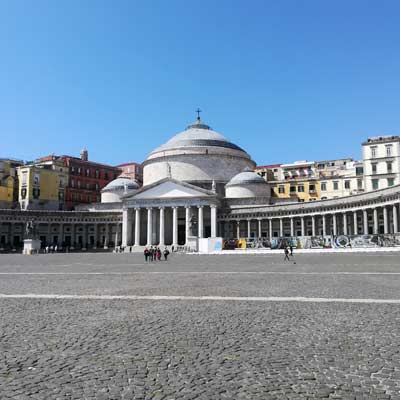
The Piazza Plebiscito is the grand square of Naples
Everything from millennia-old villas to rich art collections is on offer in this 48-hour guide to Naples. Oh, and there are plenty of chances to devour pizza – it's considered the very best in Italy.
Day 1: Start in the Quartieri Spagnoli. Ramshackle and rough around the edges, it's the perfect combo of Neapolitan grit and charm. There's bound to be a cafeteria serving cannoli (crunchy Sicilian pastries) and cappuccino there that takes your fancy.
You'll need the energy, because your next destination is the acclaimed Naples National Archaeological Museum. It's known to have one of the largest collections of Roman artifacts anywhere in the world, but the standout highlight is surely the Alexander Mosaic, reconstructed from the floors of Pompeii's opulent House of the Faun.
Once you're done in there, head south to the sleepless street of Spaccanapoli. Literally meaning 'the street that divides Naples', it does exactly as that implies. It runs right through the heart of the city, with drooping washing lines, street-food vendors and age-old churches looming on both sides. It will take a while to walk its two kilometres but it's all about breathing in the urban energy. What's more, the iconic L'Antica Pizzeria da Michele sits at the eastern end.
You'll be rewarded there by one of the best pizzas in town – choose between marinara (just fresh tomato passata and garlic) and bufalina (with buffalo mozzarella). After lunch, make for the port area.
That's crowned by the turrets of the Castel Nuovo, a grand fortification that has a history of more than 800 years. Behind that comes vast Piazza del Plebiscito. Prepare to be stunned by its sheer size and grand horse statues. For evening, a few cocktails and some tasty homecooked pasta awaits in the osterias of stylish Chiaia district.
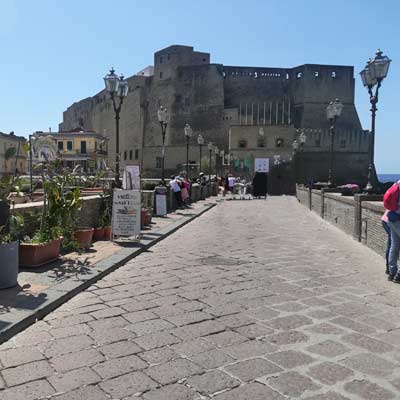
The Castel dell'Ovo (Egg castle) on the harbour front of Naples
Day 2: Rise early and get to the platforms of Naples Centrale station. That's where the trains depart for Pompeii in the morning. You might just have heard of that place – it was once an entire Roman resort town for the nobles and elite of the empire.
That is, until Mount Vesuvius suddenly erupted in 79 AD and flooded it with lava and ash. These days, the site is an amazing and haunting archaeological dig, with whole streets, entire villas, and even brothels complete with Roman wall art just waiting to be discovered.
It's likely Pompeii will take more than half of the day, while the most devoted history buffs can add on a trip to Herculaneum to boot. If not, head back to Naples city and go straight to the hilltops where the Castle of St Elmo keeps watch. That's the Vomero district, and it's famed for its sweeping panoramas of the Gulf of Naples and Mount Vesuvius. With that as the backdrop, find yourself a traditional trattoria or pizzeria and dine with a view of the metropolis to cap off the trip.

Pompeii was covered in 6m of volcanic ash when Mount Vesuvius erupted in AD 79
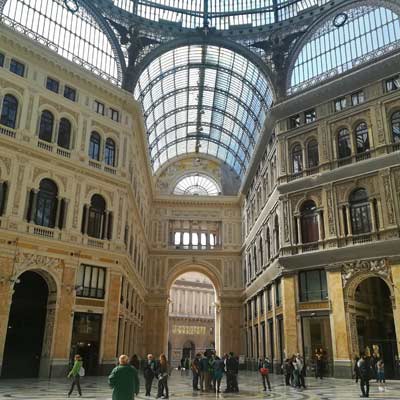
The elegant Galleria Umberto I shopping gallery in Naples
48hours in Wroclaw
Two days is all that's needed to explore Wroclaw from top to bottom. Most of your time will be spent in the charming Old Town area, but a few jaunts to parklands and other districts can combine with lively nights on the beer to boot…
The interactive map below shows a suggested route for the 48 hours in Wroclaw, with day 1 highlighted in green and day two in yellow.
Day 1: Every history lover, people watcher, foodie and sightseer will want to see the Stare Miasto district. That's the Wroclaw Old Town; the piece de resistance of this southern city. It begins around the wide boulevard of Piłsudskiego, passing through a few blocks of Soviet-era tenements before hitting the historic area proper. That starts in earnest by the Fosa Miejska, a centuries-old moat that was part of the town's medieval fortifications until it was destroyed by Jérôme Bonaparte, the brother of Napoleon.
On the left as you make for the heart of the quarter is the elegant Wrocław Opera House, while the leafy walks of Park Staromiejski are the perfect place to go for a picnic in the summer. Keep going north and you'll eventually arrive at the Rynek. This is the beating kernel of the Old Town, where you'll find the most amazing sights of all.
The Gothic-styled Old City Hall draws the eye first, followed by the German-built housing blocks of 1931 – considered by the locals to be among the ugliest in town! Be sure to check out the narrow alleys that weave through the middle of the square at the Sukiennice. Also keep the eyes peeled for the little dwarf statues that dot the plaza. They're a kitschy addition to the cityscape that you'll find on many random street corners.
As the afternoon turns into evening, consider settling in for a beer tasting at the hearty Spiż microbrewery. Or, head for Setka, where Communist paraphernalia adorns the walls and you can sample potent vodka with pickled herring.

The Most Tumski Bridge, where romantics leave love locks attached to the rails and throw the key in to the Odra River. To the rear is the spire of the Bartholomew’s church and the twin spires of the cathedral
Day 2: Having explored the Old Town, our second day begins with an exploration of the surrounding islands on the Oder River. There is a plethora to see, but the highlight is undoubtedly the iconic Ostrów Tumski.
Crossing the picturesque bridges to reach it, you will find yourself in the oldest part of Wroclaw.
The Wrocław Cathedral, with its towering twin spires, dominates the skyline, marking the most majestic church in the city. Inside, you can admire the exquisite stained-glass windows and the soaring vaulted apses.
From there, proceed to Słodowa Island, particularly delightful in the summer months when people gather by the riverside with their BBQ grills. Another worthwhile stop is Wyspa Piasek, renowned for its attractive chain bridges and quaint cobbled streets.
In the afternoon, take tram numbers 2, 4, or 10 from the Old Town to Centennial Hall, a magnificent UNESCO World Heritage Site celebrated for its revolutionary concrete architecture and a dome reminiscent of Rome's Parthenon.
Adjacent to it are beautiful gardens, with the serene Ogród Japoński as the highlight – an ideal spot for contemplation and reflection on Wroclaw's rich history.

The Centennial Hall may cause divisive opinions, but it was one of the first large reinforced concrete structures that ushered in the era of Modernism.
Capodichino Airport, or Naples Airport, is the main gateway to the city by air. It's the fifth largest in the country, so should have lots of low-cost and premium services jetting into its runways. There's a metro line to the terminal in the works, but for now arrivals will need to use the Alibus to Naples Centrale station. Tickets cost about €5 each way and the travel time is roughly 15 minutes outside of rush hours.
Centrale Station is a main stop on the north-south railway line through Italy. It's easy to get there on high-speed links from Rome and even Milan. That's one of the most glamourous ways to arrive in Campania, offering gorgeous views of the countryside before pulling right into the heart of the city.
When it comes to booking hotels in Naples, take some time to consider each neighbourhood one by one. Most travellers are drawn to the Historic Centre (or Centro Storico in local speak). That's the home of the Duomo and the buzzing lane of Spaccanapoli.
It's probably one of the pricier and more lively areas to stay. Alternatively, go to Vomero for boutique B&Bs with great views, not to mention proximity to some of the coolest hipster eateries and cafes. Or, choose the down-to-earth Quartieri Spagnoli, which is filled with hostels and guesthouses that shouldn't break the bank.
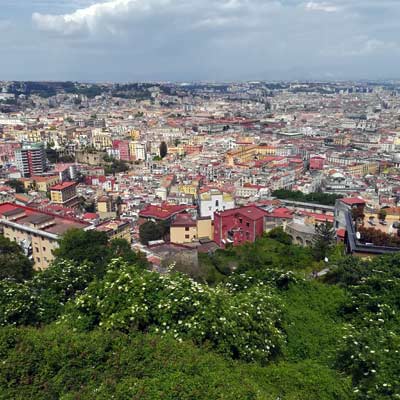
The view over Naples from the surrounding hills
Naples has a reputation for being Italy's roughest and most dangerous place.
It's true that crime rates are higher here than in the north. What's more, the mafia are still in action in these parts. You'll want to be a little more careful walking around areas like the Naples Centrale station and Quartieri Spagnoli.
Also try to stick to more touristy central districts, and don't walk alone at night. On top of that, be wary of street touts selling stolen goods, and be on the guard for pickpockets and drive-by thieves on scooters.
The ever-expanding Wrocław–Copernicus Airport is now served by loads of routes coming from across Poland and Europe. It's even possible to arrive on long-haul connecting flights thanks to Poland's flag-carrying LOT airline. There's a bus that leaves the terminals for the centre of town every 20 minutes throughout the day. Tickets cost 3 PLN and the ride is around half an hour.
You can also arrive from Krakow, Warsaw or Katowice by rail. Wroclaw's train station is considered a work of art in itself, so be sure to check out the yellow-painted façade and its grand crenulations as you leave.
Getting around Wroclaw should be easy. The town centre isn't only walkable but a real pleasure to explore on foot. There are lovely bridges linking the little isles on the Oder River, parks connecting the banks of the old city fortifications, and plenty of pedestrianised areas within the confines of the Old Town.

Many of Wrocław oldest builds, were constructed use red bricks
To get out to the Centennial Hall, Wroclaw Zoo, or other districts, you can make use of the efficient tram network. Buy tickets at the MPK Wroclaw machines at any bus or tram stop and then validate them as you board. Basic fares cost 3 PLN per ride, but you can also score passes for several days using the Urbancard website.
Hotels in Wroclaw are generally all located within the ring road of Piłsudskiego. Roughly speaking, the closer you get to the Rynek square the better the location, though staying right on the main plaza might be noisy at night. There are also some lovely boutique stays and B&Bs to find north of the Oder River.

oh we were stuck in the airport!

Copenhagen was a bit expensive...

All we did was drink beer in Brussels...

Muncih was crazy

And we got so burnt!

Remeber that night in Rome

oh we were stuck in the airport

So much fun kayaking

Berlin and that group from Austria!

There was such a view from that church

And we got so burnt!

Munich was eventful, wasn't it!

Such a view from that cathedral in Florence

Lisbon was such so much fun

Last summer was so much fun .... x

Remeber that night in Rome

Lisbon was such so much fun

Such a view from that cathedral in Florence

Munich was eventful, wasn't it!

And we got so burnt!

Remeber that night in Rome

All we did was drink beer in Brussels...

Berlin and that group from Austria!

Can't wait to go back to Dubrovnik

Remember that boat ride in Prague

Copenhagen was a bit expensive...
